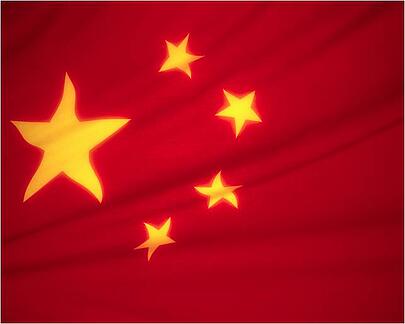China’s VAT Affects Air Freight, But What About All China Shipping?
China’s new Value Added Tax (VAT) policy is now officially in effect throughout all of the People’s Republic of China.
In previous Universal Cargo Management blogs, we covered the basics of what the Value Added Tax (VAT) reform in China is and how the new VAT policy affects the international shipping industry.
 Pursuant to Tax Circular Caishui No. 37 (Circular 37), the Ministry of Finance (MOF) and the State Administration of Taxation (SAT) in China have jointly implemented a VAT on many specified services or industries including transportation services and logistics-related services throughout the whole of China.
Pursuant to Tax Circular Caishui No. 37 (Circular 37), the Ministry of Finance (MOF) and the State Administration of Taxation (SAT) in China have jointly implemented a VAT on many specified services or industries including transportation services and logistics-related services throughout the whole of China.
Ocean carriers with shipping lines in China sent out letters, emails, and announcements that they will be in compliance with China’s Circular 37 and a 6% VAT will be levied on all freight charges in China. A carrier collects the 6% VAT from shippers and then pays that to China.
The easiest thing to compare the VAT to is a sales tax. When you buy that tool kit from the hardware store, the hardware store adds sales tax that they turn around and pay to the government. When you import from China, the carrier will add a 6% VAT that will then go to China.
It is important for shippers to realize that the VAT does not only apply to ocean freight. Air cargo in China is also subject to China’s new VAT policy.
U.S. importers who primarily ship via air from China will especially be affected by China’s new VAT. This is because air freight is traditionally prepaid at origin.
Industry players from ocean carriers to airliners to NVOCCs have been seeking clarification on the new rules and their application from China’s MOF and SAT as there has been some uncertainty according to an email on the VAT situation from Tommy Chan, Global Product Compliance Manager of Toll/Seamaster.
Perhaps some of this reaching out to the MOF and SAT is just clutching at straws for a possibility at avoiding a 6% increase to shipping costs from China.
Different types of deals between sellers in China and buyers from the U.S. could affect who actually pays the VAT.
Different types of deals involving international shipping are labeled by incoterms. Buyers may start looking for deals that would fall under FOB or CIF incoterms where sellers handle clearing goods and port fees or loading and transporting goods up to the destination port to try to let the 6% VAT in China fall on the sellers.
Of course, sellers in China could as easily try to avoid such deals or simply raise their prices on those deals to cover the increased cost hitting transportation and logistics-related services.
Trying to find a way to avoid the 6% VAT is probably not worth the efforts. After all, the only thing as certain as taxes is death.
However, if we are clutching at straws, I’ll give you this lead to grab onto.
According to a post from Taxation International News & Information, “In a statement issued on July 24th the State Council of China announced that from August 1st all businesses with monthly turnovers below RMB 20 000 will not be required to pay Value Added Tax (VAT) or business tax.”
This is a tax cut China is doing to stimulate small businesses and through them, the country’s economy.
If you’re buying goods from a small enough business in China and doing deals like FOB or CIF in nature where shipping logistics fall on them, perhaps the 6% VAT will not factor into your costs.
Again, this is really grasping for those straws. We’re talking about businesses doing less than 20,000 yuan or about $3,263 a month who are now going to benefit from this VAT and business tax cut. And even if you do find a business that size which fits as a supplier of the goods you’re looking for, there’s no guarantee the VAT of Circular 37 wouldn’t have to be paid when they get transportation or logistics-related services.
Perhaps the reaching out to the MOF and SAT will clarify if deals with small Chinese companies hold the possibility of avoiding the new VAT.
In the mean time, it seems like a good idea to settle into the fact that shipping from China has increased by 6%.
![]()
Source: China

